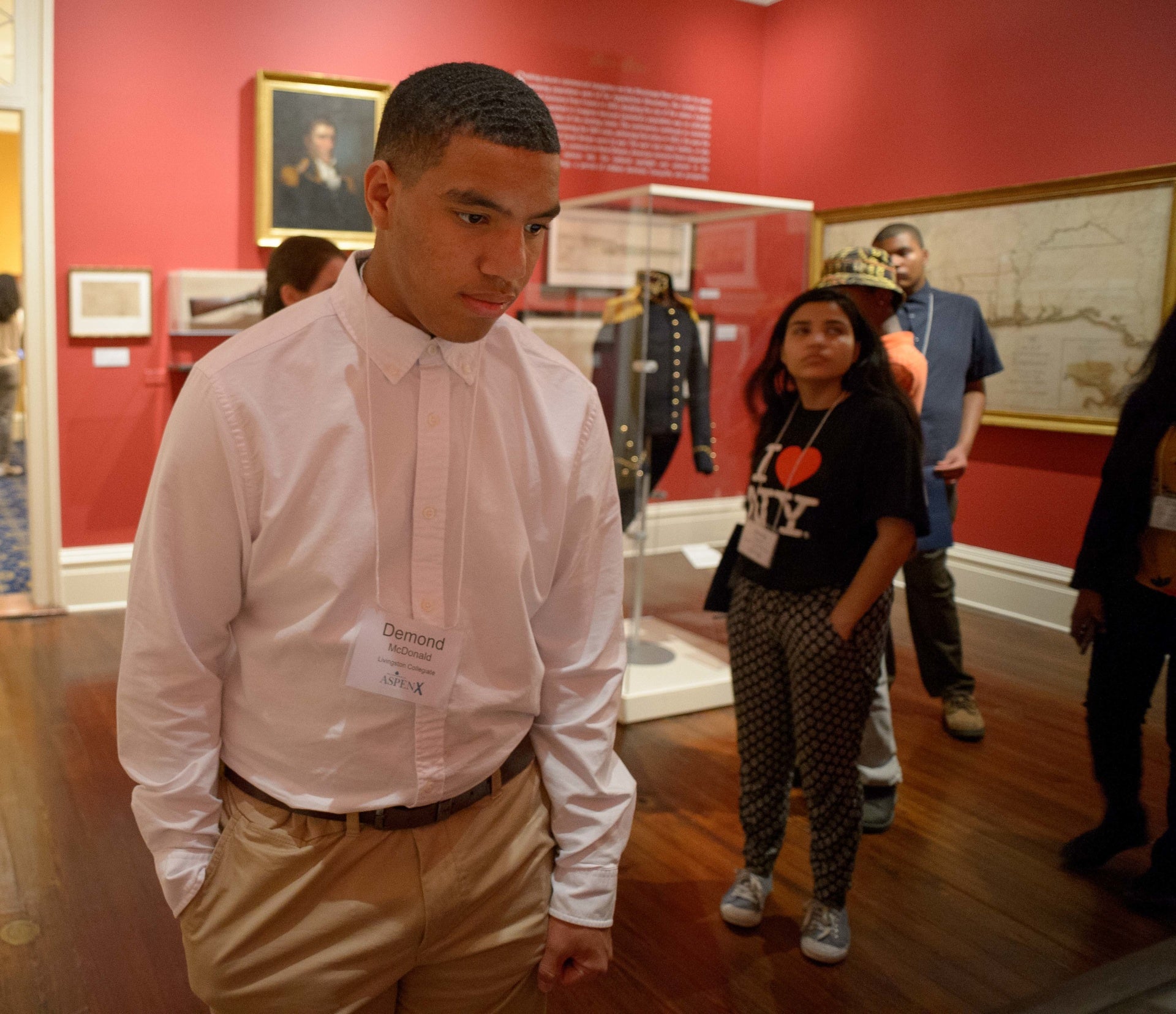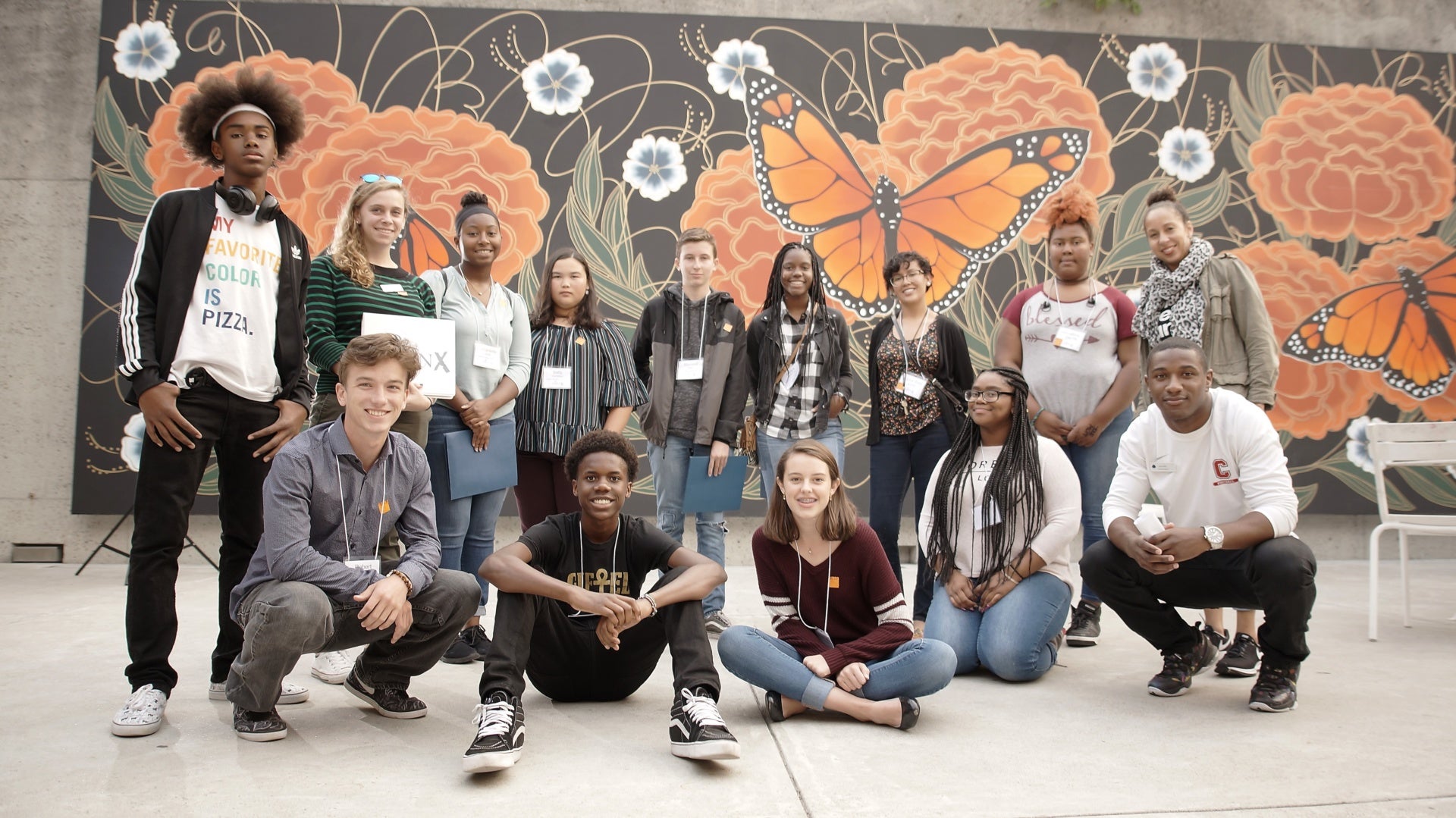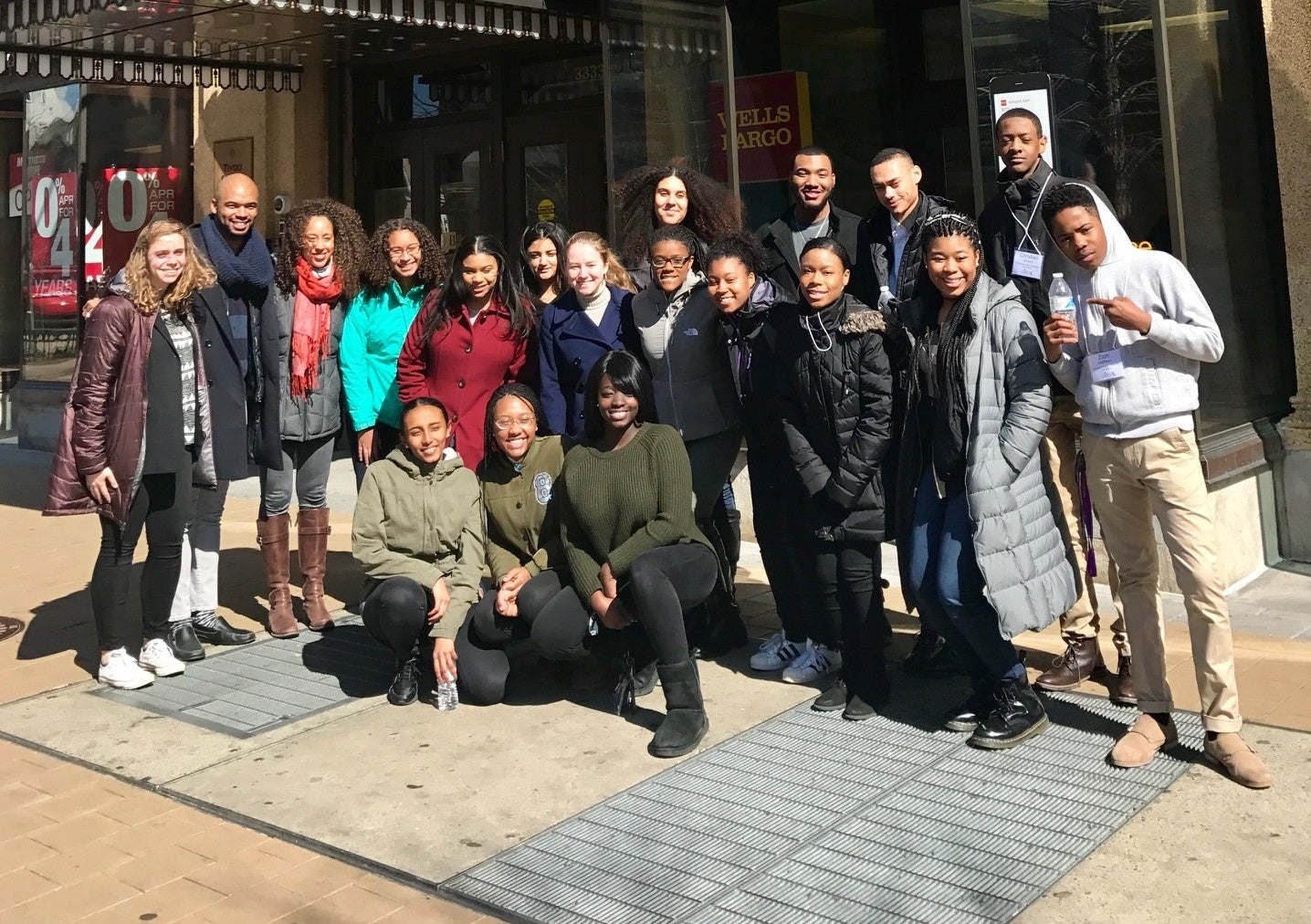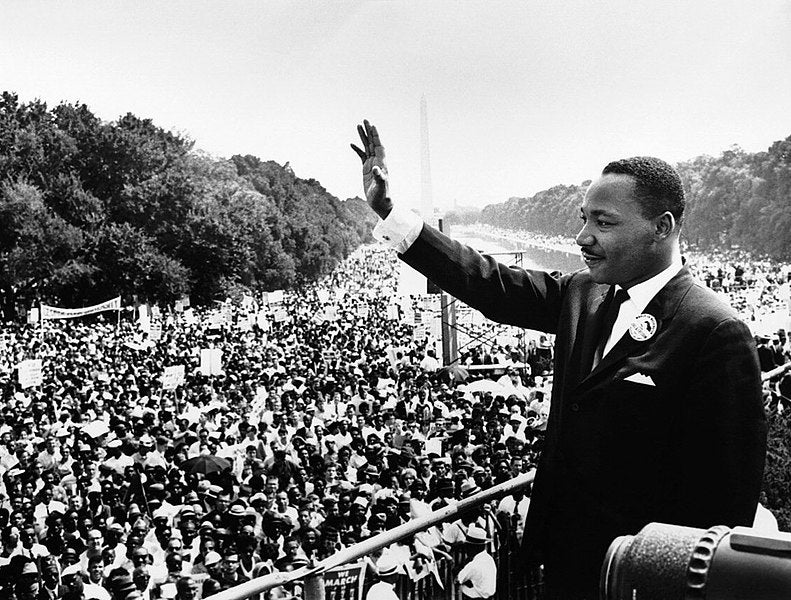‘New Orleans is a better city since Hurricane Katrina.’ High school students from 12 public charter, private, and parochial schools across New Orleans considered the statement, then generally shared reservations about agreeing or disagreeing with it in light of juxtapositions like decreases in overall crime rates and displacement of lifelong residents. AspenX senior program associate Rachel Sverdlove invited students to organize and share thoughts about the difficult and important topic.
This was just one of many issues covered during AspenX at Le Musée de f.p.c., the Historic New Orleans Collection (THNOC), and the New Orleans Center for Creative Arts this past weekend.
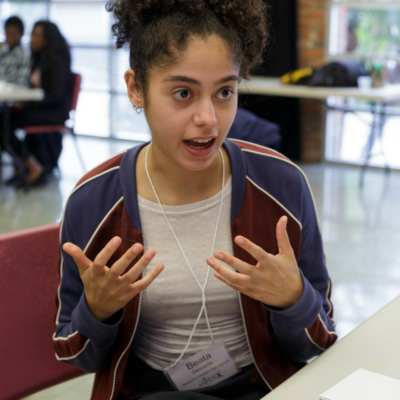
Photo by Leslie Gamboni
Friday’s experiential learning module first took students to Le Musée de f.p.c. – one of the country’s few attractions dedicated exclusively to telling the story of free people of color. Rich in culture and history, Le Musée is a house museum located in the upper Treme neighborhood on land once part of the plantation of Domingo Fleitas – a Spanish colonial who fought with the Spanish army led by then-governor of Spanish Louisiana, General Bernardo de Galvez, in the American Revolution.
At Le Musée, native New Orleanian, museum curator, and historian, Kimberley Coleman guided students through the museum’s collection of documents, paintings, and decorative arts, including a speech titled “Every Man Should Stand Equal Before the Law”delivered to a delegation of Republican leaders in Boston, MA on April 12, 1864 by Arnold Bertonneau – a captain in the 1st Regiment of the Louisiana Native Guards and one of the first African American participants in Louisiana’s Reconstruction period.
Coleman then engaged students in a series of dialogues, focusing on their experiences at school and the role that school communities can play in expanding students’ minds or limiting their exposure to other cultures and perspectives.
A fitting juxtaposition to the story of free people of color, students then spent time exploring the Louisiana History Galleries at the Historic New Orleans Collection in the city’s French Quarter. The Galleries tell the story of the Louisiana history using art and artifacts from precolonial history to the Louisiana Purchase through 2005 – a year stamped into the history of the region by the devastation of Hurricane Katrina.
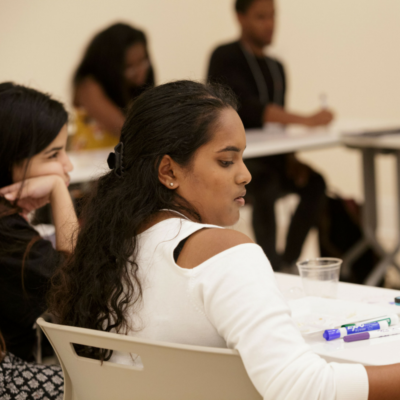
Photo by Leslie Gamboni
After exhibition tours, the group explored merits of the 13th, 14th, and 15th Amendments; distinctions between persons who identify as African-American versus Afro-Creole; P. B. S. Pinchback’s tenure as the first African-American governor of a US state during the Reconstruction era; Louisiana’s history of rewriting the state constitution to disenfranchise people of color; and the Plessy v. Ferguson Supreme Court case that challenged racial segregation with THNOC assistant curator and historian Eric Seiferth.
Reconvening at the New Orleans Center for Creative Arts on Saturday, students were led through discussions about takeaways from Friday’s museum trips, racially-charged events of historical significance, and manifestations of race in their everyday lives. They reflected on personal stories of experiencing and witnessing racism and found common narratives around profiling, gentrification, the school to prison pipeline, tokenism, and code-switching.
After revisiting submissions to the Race Card Project (now part of the Bridge at the Aspen Institute) and unpacking the psychology of implicit bias, students explored the role of mass media in creating and perpetuating stereotypes and the ability of groups to reclaim racial or sexist slurs as acts of power and unity.
After lunch, the group took a roughly 100-yard walk to the plaque marking the site of Homer Plessy’s removal from an East Louisiana Railroad Co. train car in 1892 – which led to the landmark Supreme Court case – Plessy v. Ferguson – that codified the doctrine of ‘separate but equal’ in 1896.
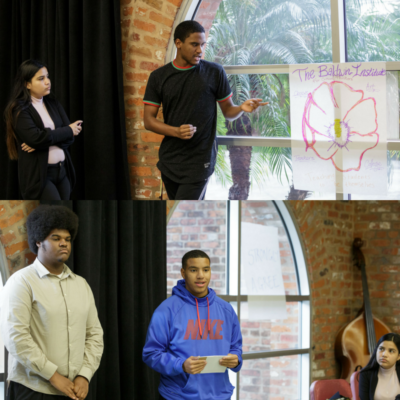
Photo by Leslie Gamboni
Students brought their seminar-experience to a close working in small groups to identify pressing issues in their communities and brainstorm innovative solutions to solve them.
The Institute’s Youth and Engagement Programs is excited to build on the momentum generated by this conversation. The AspenX program will return to New Orleans in early 2018 and welcomes suggestions of additional cultural institutions to visit and topics to explore that are important to the broader New Orleans community. Please send any suggestions to ye.info@aspeninstitute.org.
In accordance with Youth and Engagement Programs’ mission to empower young people, AspenX contracted catering services through Café Reconcile – an organization whose mission is to transform the lives of young adults through the ministry of reconciliation by encouraging personal growth, providing workforce development and training, promoting entrepreneurship, and building strong communities through community economic development.
